Part 22
Twentyfirst Update:




Well, then I suppose it is time to go back to that particular dungeon.
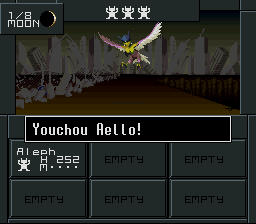
What's this?
Another of the Harpy sisters.Wikipedia posted:
Aello was one of Hippolyte's Amazons in Greek mythology. She was the first to attack Heracles when he came for Hippolyte's girdle. Unfortunately, Heracles was wearing the Nemean Lion skin from his first labor, making him invulnerable. Aello could not kill Heracles; thus, she was killed instead. Her name meant, "Whirlwind".
Also in Greek mythology, Aello (also Aellopos, Podarge, Podarke, and Nikothoe) was the name of one of the Harpy sisters who would abduct people and torture them on their way to Tartarus. In this form, her name meant, "Storm Swift".
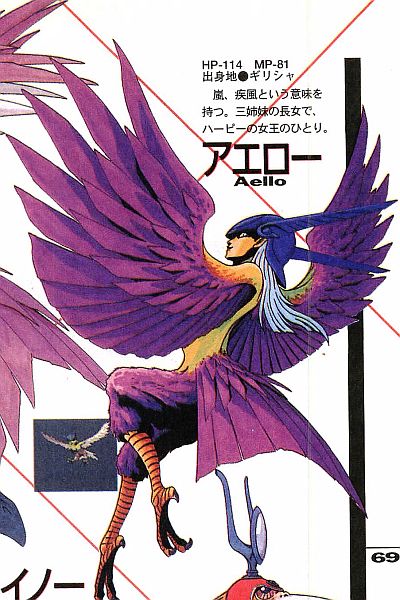

Hrms. Not too bad.
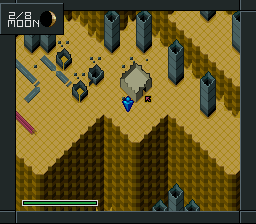
There it is. Again.




Of course, the answer is no.


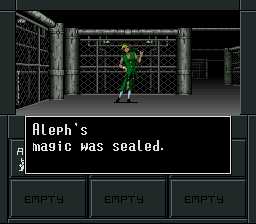

Useless, since Aleph is completely useless with magic.
Meh.



Useless as well, apparently, Aleph is a sleepwalker.


That's more useful. And annoying.


Grargh.
Rinse and repeat in every corner of all 3 floors.
In the very end:













Aaah, delicious revenge. And delicious MONEY.
Instead of paying him 10k for it, he gives 10k just to let him be
 And that transforms Aleph from a Law asshat to a Neutral asshat, at last.
And that transforms Aleph from a Law asshat to a Neutral asshat, at last.Back to Shinjuku.
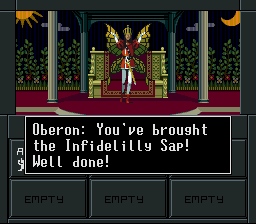
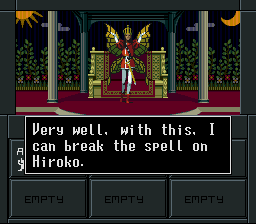
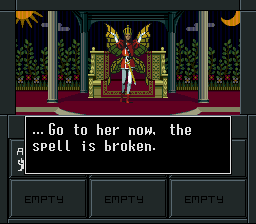
Hooray!
Going down then.



Okay.











Bwahaha! Take that!





Now that Hiroko has rejoined the party, it is time to improve her gear, by now it is pretty mediocre.
But first: Time to check the Drug store.





Nice selection. Stocked up on the de-items.
Time to check the backroom.














Dalek sure recieved a drastic change in his behavior. Instead of trying to murder Aleph, he is HELPING HIM. Truly, love conquers all.

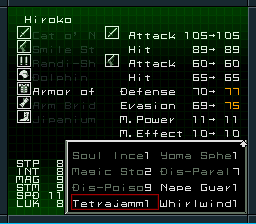
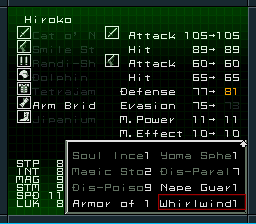
Yay! Upgrades!


A cute couple. But they are different species. DIFFERENT SPECIES.
Or something like that.
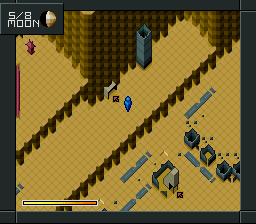
Out again.
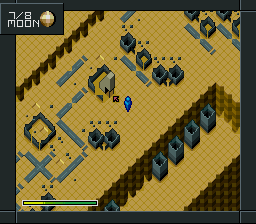
In again.


Chirei, eh?
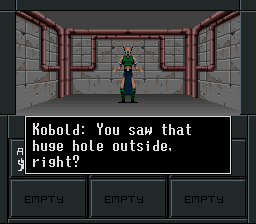
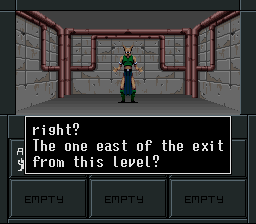

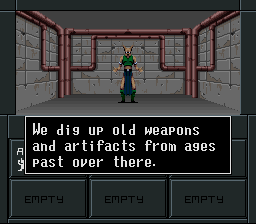
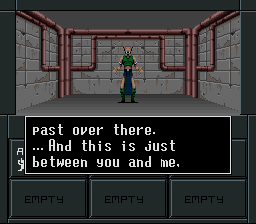


Aleph found a pillar, no weapons, though.
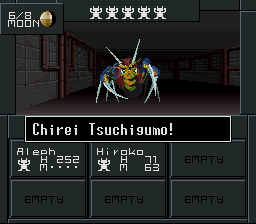
Tsuchigumo!
Art already shown previously in the thread.Wikipedia posted:
The Tsuchigumo (土蜘蛛?) were a people of ancient Japan, believed to have lived in the Japanese Alps until at least the Asuka period. The name means "ground spider", likely due to perceived physical traits that were later exaggerated or embellished. A spider-limbed monster of the same name appears in some Japanese folktales, which possibly were mythical retellings of battles against these peoples. According to Japanese History, Japanese people used "Tsuchigumo" as a derogatory term for bandits and thieves, akin to the Tsuchigumo that lived under the ground and in caves.
The most famous example is that of Minamoto no Raiko. In this story, Raiko investigates tales of a giant skull flying through the air. He and his retainers chase the skull, but it eludes them. It is during this chase that he finds a youth named Kintaro. Raiko, impressed by Kintaro's strength, initiated him as one of his retainers and continued on his venture. The search for the skull proves fruitless, and Raiko retires for the night. At the house where they stay, Raiko finds himself feeling ill, and a young servant boy brings him medicine daily, under the pretence of helping him to recover. Raiko continues to grow ill, and begins to suspect the boy of mischief. One day, he waits for the daily visit and then lashes out, striking the boy and causing him to run from the house. This breaks a powerful illusion, and Raiko finds himself covered in a spider's web. His retainers free him, and together they track down the boy by his trail of blood. They follow it into the mountains, and there find a huge spider, dead from a wound.
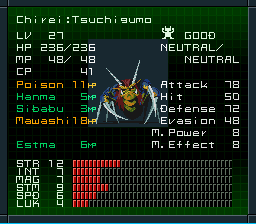

So these are the remains of Akasaka, okay, two old areas rediscovered.

Time to fuse the minions.
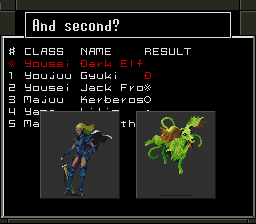

Apis!
Wikipedia posted:
In Egyptian mythology, Apis or Hapis (alternatively spelt Hapi-ankh), was a bull-deity worshipped in the Memphis region.
According to Manetho, his worship is said to have been instituted by Kaiechos of the Second Dynasty. Hape (Apis) is named on very early monuments, but little is known of the divine animal before the New Kingdom. He was entitled "the renewal of the life" of the Memphite god Ptah: but after death he became Osorapis, i.e. the Osiris Apis, just as dead men were assimilated to Osiris, the king of the underworld. This Osorapis was identified with Serapis, and may well be really identical with him: and Greek writers make the Apis an incarnation of Osiris, ignoring the connection with Ptah.
Apis was the most important of all the sacred animals in Egypt, and, like the others, its importance increased as time went on. Greek and Roman authors have much to say about Apis, the marks by which the black bull-calf was recognized, the manner of his conception by a ray from heaven, his house at Memphis with court for disporting himself, the mode of prognostication from his actions, the mourning at his death, his costly burial and the rejoicings throughout the country when a new Apis was found. Mariette's excavation of the Serapeum at Memphis revealed the tombs of over sixty animals, ranging from the time of Amenophis III to that of Ptolemy Alexander. At first each animal was buried in a separate tomb with a chapel built above it. Khamuis, the priestly son of Ramesses II (c. 1300 B.C.), excavated a great gallery to be lined with the tomb chambers; another similar gallery was added by Psammetichus I. The careful statement of the ages of the animals in the later instances, with the regnal dates for their birth, enthronization and death have thrown much light on the chronology from the Twenty-second dynasty onwards. The name of the mother-cow and the place of birth are often recorded. The sarcophagi are of immense size, and the burial must have entailed enormous expense. It is therefore remarkable that the priests contrived to bury one of the animals in the fourth year of Cambyses.
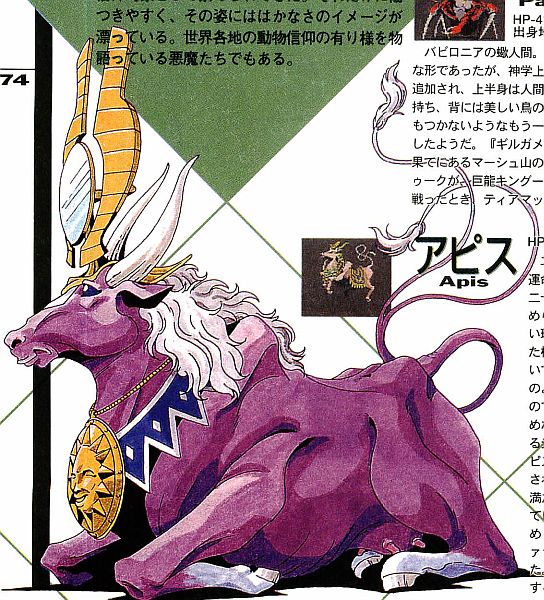

And then fusing these 3 to make something new...
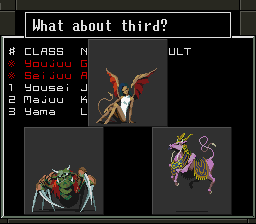

cannot find the concept art for Pabilsag. I can find his entry in the Compendium, but the art isn't there. In any case, pretty good demon, I think.Wikipedia posted:
Pabilsag in Mesopotamian tradition was a tutelary god of the city of Isin. The consort of the goddess Nininsinna, he was identified with the lost city of Larak.
The text Pabilsag's journey to Nibru describes Pabilsag as journeying to Nippur and presenting the god Enlil with gifts. He was given the epithet of "the wild bull with multicoloured legs".
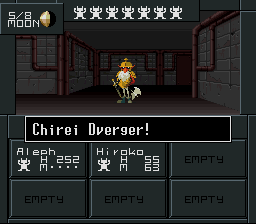
A Dverger!
Wikipedia posted:
In Norse mythology, the dwarves (Old Norse: dvergar, sing. dvergr) are highly significant entities associated with stones, the underground and forging. Apart from the Eddas, they notably appear in the fornaldarsagas. They seem to be interchangeable and may be identical with the svartálfar (black elves), and sometimes the trolls (compare also with vetter, a class of beings from later Scandinavian folklore). The Völuspá divides the dwarves into what may be three tribes, lead by respectively Mótsognir, their first ruler; secondly Durinn, and finally Dvalinn, who according to the Hávamál brought them the art of rune writing.
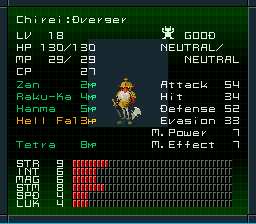
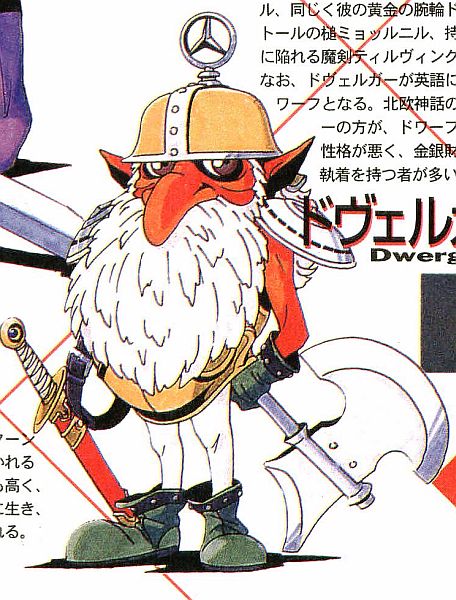
Recruited one of these as well.

Oh, great, more spending in upgrades.

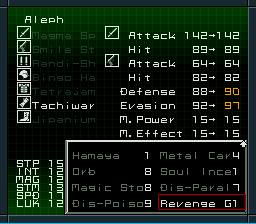
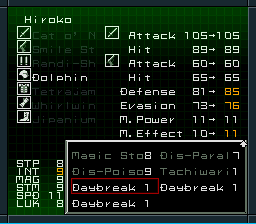
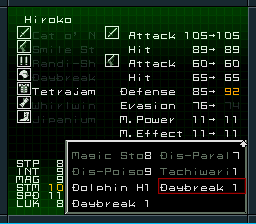
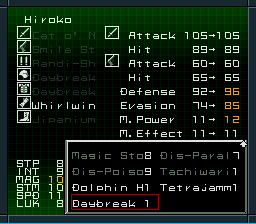

A bar! Time to check the gossip, then!
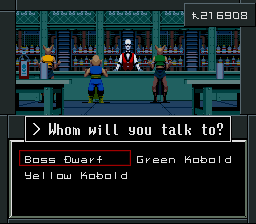




Been hearing quite a lot about that Masakado guy lately. Something tells me that he will be important.



That cannot be good for that Masakado guy's health.




Bah!

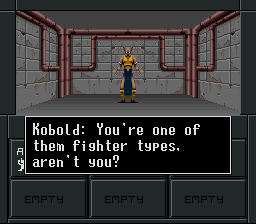







Hms, sounds worth checking.
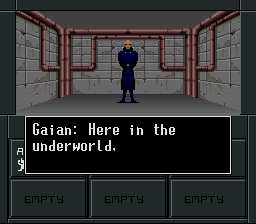

Clearly that's true. There are Gaian churches everywhere, but not a single Mesian church around here.

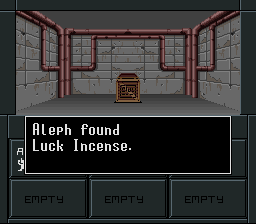
Hooray!


And that has the effect of knocking away an enemy. Not effective on bosses, though.


He ain't friendly, unfortunately.

Next: Checking what's below the Chirei town.